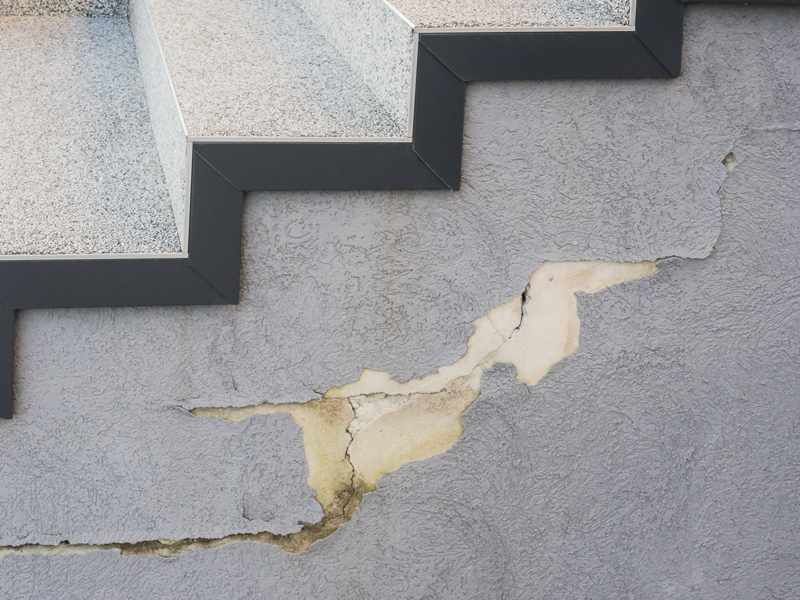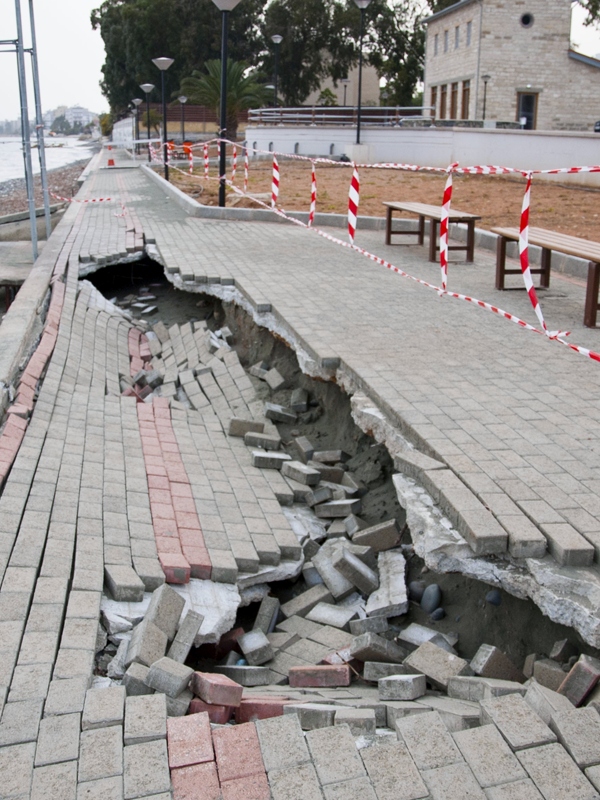Disclaimer: This blog is for informational purposes only and is not legal advice. For specific legal guidance, please contact Pursiano Law for a free consultation.
Construction defects can turn the joy of property ownership into a nightmare. So, understanding what constitutes a construction defect, whether latent or patent, is crucial for homeowners and commercial real estate owners alike.
In this blog, we’ll explore the basics of construction defects. We’ll explain their types, provide examples, and explain who may potentially be held responsible.
If you find yourself facing issues with your property, it’s essential to know your options. From there, you can seek assistance from a seasoned construction defect attorney. Let’s dive in to learn more about construction defects.
What is a Construction Defect?
Construction defects can manifest in several ways, impacting the property’s safety, functionality, and aesthetics. These defects may not always be immediately apparent, and some may take years to surface.
A “construction defect” means a deficiency in or arising one or more of the following:
- The design
- Specifications
- Planning
- Supervision
- Observation of construction
- Construction
- Repair
- Alteration
- Remodeling of real property

These deficiencies may result from:
- Failure to construct and/or remodel real property in accordance with accepted trade standards for good, workman-like construction at the time of construction;
- Defective materials, products, or components used in the construction or remodeling;
- A violation of the applicable codes in effect at the time of construction or remodeling; or
- Failure of the design of real property to meet the applicable, profession care standards at the time of governmental approcal.
Unfortunately, construction defects may potentially significantly reduce the value of a property. Some defects may pose safety hazards, threatening the well-being of occupants. And because some defects aren’t evident immediately, they can lead to a larger, long-term impact.
What are Latent & Patent Defects?
Patent defects are defects already known or readily obvious upon inspection. They’re the ones that a contractor, subcontractor, supplier or other tradesperson should find during their typical inspections.
Latent defects are defects concealed or otherwise not readily observable. They may appear long after the building construction is complete. In some cases, ownership has long since transferred from the developer/builder to the residential or commercial building owner.
Together, latent and patent defects make up the majority of construction defect cases.
What Are Examples of Construction Defects?
The attorneys at Pursiano Law have handled several construction defect cases across California, Florida, Nevada, and South Carolina. Some examples of the conditions that led to faulty construction claims include:

- Failure to properly install window and sliding glass door systems.
- Damaged drywall around or adjacent to windows and sliding glass doors due to improper weatherproofing per the building code.
- Sewer and plumbing backups caused by inadequate sewer line installation.
- AC and ventilation systems fail to cool and dehumidify, causing mold growth inside the unit and/or home.
- Cracks in drywall and stucco caused by a bad design or failure to follow the design plans.
- Cracks in building foundations, slabs, and walls caused by soil settlement, inadequate geological testing, and/or site design. These cracks may also be from improper reinforcing steel placement or failure to follow the engineering site design and plants.
- Flickering lights or electrical outage from inadequate electrical load and wiring.
- Roof defects that cause leaks or falling tiles
- Podium deck leads into the garage below due to improper design, construction, or waterproofing application.
- Leak through retaining walls caused by improper design, construction, or waterproofing application
- Drainage caused by the builder’s failure to install a project-wide drainage system. This typically results from standing water and flooding in homes and yards.
Who Can Be Responsible for Defective Construction?
Builder/Contractor Negligence
There are a plethora of ways in which a contractor may behave negligently or recklessly. That places risk on the contractor’s agents, the home/business’ inhabitants, and the property itself. A few common examples of contractor negligence include:
- Failure to follow applicable building codes and industry standards
- Inadequate supervision of workers
- Cutting corners
- Failure to acquire necessary permits
- Reckless behavior
- Failure to follow safety procedures
- Failure to provide workers with safety equipment
Professional Negligence
Savvy real estate developers know that behind every successful construction project is a hardworking team of professionals. From architects and engineers to general contractors and designers, everyone involved must abide by a certain standard of care. This ensures the plan goes smoothly. Unfortunately, construction professionals don’t always practice due to prudence and caution, especially if they lack proper training and/or resources.
A minor miscalculation in the blueprints or loose railing might be overlooked or remedied right away in small designs. When the stakes are higher, though, a simple mistake could compromise the entirety of the project.

Professional negligence is a legal concept. Within each industry, professionals are expected to perform their duties at a certain level of skill, care, and diligence. Professional negligence refers to a professional’s failure to perform their duties at the appropriate level within their field of expertise.
Some of the most common types of professional negligence include:
- Architect Negligence. These cases involve flawed building designs that aren’t up-to-code or safe for contractors and users.
- Engineer Negligence. Because of an engineer’s versatility on the job, engineers are likely to commit significant errors.
Catastrophic Construction Failures
While construction defects typically result in no more than moderate damages, catastrophic construction failures are often much more, well, devastating. These may also have severe ramifications; for example, foundational or structural damages may lead to the entire building or portions of it to collapse.
Nearby buildings, drainage vault systems, and community developments could also be at risk. When events like these occur, there’s a serious threat of injury, illness, lasting mental health conditions, and even death. Workers on site or even pedestrians who happen to be around during the collapse are at risk.
Complex Construction Claims
Some disagreements arise during smaller projects that can easily be resolved through negotiation. Unfortunately, a simple roadblock in a large construction project may launch an ever-escalating series of disputes among contractors and managers.
Some common issues present in a complex construction claim may include:
- More than 20 parties involved
- Millions of dollars at stakes
- Disputes span across multiple industries
- Several contract discrepancies
- Ever-increasing legal fees
- Negative publicity
You’re Experiencing Problems with Your Property – Now What?
If you need a construction defect attorney, Pursiano Law will assess your claim at no cost to you. It’s important to be aware of your rights. We’ll engage industry experts, including architects, engineers, and contractors, to evaluate the cause of the defect(s). From there, industry professionals will gauge what repairs are warranted to cure the defects and estimate the cost of repairs.
Your legal counsel at Pursiano Law can negotiate with the developer, contractor(s), and design professionals on your behalf. If the pre-suit negotiations don’t achieve a resolution, we’ll file suit to develop your case for further trial and arbitration.
Contact us today and schedule your free consultation. We’re on your side, and we’re confident that we’ll lead you to victory!

